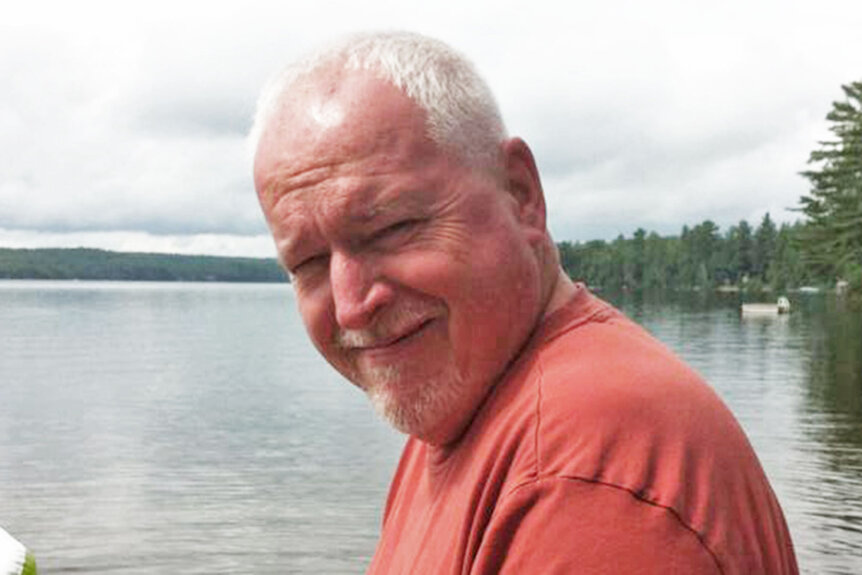Create a free profile to get unlimited access to exclusive videos, breaking news, sweepstakes, and more!
After 3 Men Vanished From Toronto, Investigators Considered A Cannibal Killer
Bruce McArthur was eventually found guilty of murdering eight men in the Toronto area – but the investigation first began as a possible cannibalism case.
A serial killer hiding bodies in planters is horrifying and macabre enough — but the early investigation into what became the Bruce McArthur case went off on a completely different, and twisted, tangent.
From 2010 to 2017, several men disappeared from Toronto’s predominantly gay neighborhood The Village. In 2018, the killer was unmasked: 66-year-old Bruce McArthur, a genial landscaper who occasionally moonlighted as a mall Santa. McArthur eventually pleaded guilty to murdering eight men, mostly gay men of Southeast Asian or Middle Eastern descent. He is Canada’s most prolific serial killer ever.
The story is a chilling one, and as seen in the Oxygen special “Catching A Serial Killer: Bruce McArthur,” the investigation into the string of murders actually first focused on the possibility of a cannibal killer.
On Sept. 6, 2010, Skandaraj Navaratnam left a gay bar in The Village with an unknown man. He was never seen again. A few months later, on Dec. 29, 2010, Abdulbasir Faizi told his wife he was heading out to meet a friend. Instead, he was last seen frequenting a local bathhouse in The Village. Then, in 2012, Majeed Kayhan was reported missing by his son. He had last been seen alive on Oct. 8, 2012. All the men vanished within blocks of each other, according to “Catching A Serial Killer: Bruce McArthur.”
However, the missing men did not initially receive much attention from authorities. It was only when they were contacted by Interpol (the International Criminal Police Organization) in 2012 that they realized something was seriously amiss.
Interpol contacted Toronto authorities because a source in Switzerland had a conversation with a person on a cannibal fantasy website called Zambian Meat, where users discussed torturing and eating people, CTV News reported in 2018. This user in particular claimed he had killed and eaten a man in Toronto.
“When you’re first told that, it’s unbelievable, it’s like, ‘A cannibal, really?’” Det. Sgt. Hank Idsinga with the Toronto Police Service told “Catching A Killer: Bruce McArthur.” “Then, hold up, well, actually we do have a missing man from Toronto that fits the profile this person is talking about.”
Authorities believed the victim the user was referring to was Skandaraj Navaratnam, as the user allegedly referred to “Skanda” during conversations, CBC News reported in 2019. They also realized they had a few other men who matched the description — Majeed Kayhan and Abdulbasir Faizi — and after flying to Switzerland to interview the source and determining the tip credible, they launched an investigation into the three missing men, dubbed Project Houston, after the famous phrase, “Houston, we’ve got a problem,” according to “Catching A Serial Killer: Bruce McArthur.”
Investigators were able to trace the user in question — “Chefmate50” — and learn his real identity: James Alex Brunton, a married former hospital technician living in Peterborough, Ontario, CTV News reported. Those working on Project Houston called him “Suspect Zero.”
For seven months, they surveilled Brunton as they investigated his potential involvement. They also considered a possible link between him and another notorious Canadian killer: Luke Magnotta, a young man who recorded a video of himself murdering and dismembering college student Jun Lin in 2012, according to CBC News. Magnotta mailed the victim’s hands and feet to schools and political party headquarters, and he ate some of the body parts, the New York Daily News reported in 2017. Magnotta, who also posted several online videos where he tortured cats, was recently the focus of the docuseries “Don’t F—k With Cats.”
Magnotta was in custody during the investigation, and the possible cannibal connection, as well as several other clues, drove authorities to see if Brunton and Magnotta had any links.
While chatting with other young men online about cannibalism, Brunton often mentioned a cannibal named “Nathan,” who worked as a dancer at a club called Remington’s, CBC News reported. Magnotta had also once worked as a dancer at that club and had called himself “Nathan” in text messages, according to the outlet. Magnotta had even put up online ads looking for Middle Eastern men only a few months before Navaratnam, the first victim, vanished. Plus, when Magnotta was a teenager, he lived only a few blocks away from Brunton.
All of these incidences alarmed investigators, but the evidence was clear: They concluded Brunton’s cannibalism fantasies were just that — make believe. Neither Magnotta nor Brunton were ever connected to the deaths o Navaratnam, Faizi and Kayhan. Project Houston was over.
Brunton, however, was convicted of child pornography charges in 2014, CBC News reported.
In the end, the man behind all the murders was Bruce McArthur. And while it would take several more years for Toronto authorities to catch him, Project Houston did first surface McArthur’s name to investigators, CBS News reported. A username and email address, "silverfoxx51,” was found in Navaratnam and Faizi’s computer data. After finding a corresponding number to the email address in Navaratnam’s contact list, detectives were able to identify silverfoxx51 as McArthur.
McArthur was interviewed as part of Project Houston in 2013 as a potential witness, according to CBC News, but not as a suspect.
Six years later, McArthur was sentenced to life in prison for murdering eight men.
For more on this case, watch Oxygen’s special “Catching A Serial Killer: Bruce McArthur” here.



































